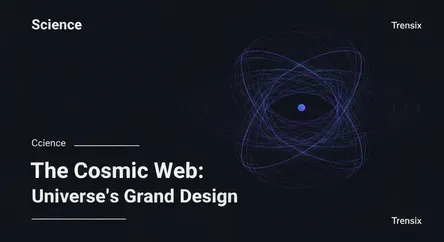Science
The Cosmic Web: Universe's Grand Design

Discover the cosmic web, the largest structure in the universe. Learn how this vast network of galaxies and dark matter shapes everything we know.
What is it?
The cosmic web is the largest-known structure in the universe, a colossal, filamentary network spanning billions of light-years. It's a sponge-like arrangement of matter, consisting of vast, interconnected filaments of dark matter and gas. These filaments act as cosmic highways where galaxies form and travel. At their intersections, matter clumps together into massive galaxy clusters, while the spaces between the threads are immense, largely empty regions called cosmic voids. Essentially, the cosmic web is the universe's scaffolding, dictating where galaxies are born and how they evolve.
Why is it trending?
Interest in the cosmic web is surging thanks to powerful new observational tools and simulations. Telescopes like the James Webb Space Telescope and large-scale surveys are mapping the universe with unprecedented detail, allowing astronomers to observe faint filaments directly for the first time. These observations test our cosmological models, particularly our understanding of dark matter and dark energy, which govern the web's formation. Each discovery provides a clearer picture of this intricate cosmic architecture and the fundamental forces shaping our universe.
How does it affect people?
While it has no direct impact on daily life, the cosmic web helps answer fundamental questions about our existence. Understanding this structure allows us to trace the origins of our own galaxy and comprehend our place within the cosmos—it's the ultimate context for our cosmic address. Studying the web is also crucial for solving the mysteries of dark matter and dark energy, the enigmatic components making up 95% of the universe. Unlocking its secrets could revolutionize physics and our entire perception of reality.